A Heater for Moxie

The Actual Espar heater, situated aft on the starboard side. Exhaust vents out the left side just forward of the transom. The heating duct is on the right above the starboard cockpit scupper hose. The small black hose is combustion air from the cockpit locker.
Cruising south from Nova Scotia in the fall, there's going to be potential to encounter some pretty cool days and nights. We will be in no hurry to get past Norfolk Virginia till after Nov 1st, since our insurance policy won't cover us south of there till after that date, so we have decided to install a small furnace.
Since were not wintering in Halifax harbour, all we need is something to take the chill off in the evenings and mornings and be comfortable if we are cooped up for a day or two due to any sort of delay in our travels. With that in mind, we purchased an Espar Airtronic D-2 diesel forced air furnace. Saved over $1000 by ordering the unit along with a marine installation kit from a supplier in Langley, BC. Now the D-2 furnace itself is about the size of a loaf of bread, but by the time everything is hooked up and connected, it probably takes up about twice that space. It's mounted out of the way on the rear bulkhead at the very end of the starboard quarter birth.
There are some fairly good youtube video's on installing these units, as well as an article in Good Old Boat about a guy who salvaged one out of the sleeper cab of a transport truck and installed it in his boat. The other unit to consider is the webasto, which seems to be designed along the same lines as the espar. They all come in varying sizes so there is probably one to suit your own boat no matter how big or small. Espar and Webasto diesel heaters are both made in Germany so the quality of either unit should be pretty good. I see there are also some Asian units coming on the market during the last year or so, haven't heard any news good or bad about them, but I'd rather stay with something proven.
Been working on this project off and on the better part of 3 weeks now. Seem to spend as much time thinking and considering things such as where the duct work goes, the electrical wiring, the exhaust location and the fuel hook-up. Ran the 2.5" duct to a single outlet blowing into the main cabin which will hopefully work just fine. I'm including pictures of the installation so far above.
Well a couple of weeks have passed and I finally finished the heater installation and was able to get it working after a couple tries. Had a bit of trouble getting the air out of the fuel line. Sounds like a jet engine starting up but its not to loud in the main cabin. This thing really throws the heat. Overall, I'm pretty pleased with the way the installation went. I'll tidy things up and put a guard around the ducts and the heater to protect it and anyone from getting burned.
Another project I was able to complete was the installation of a Sterling "Alternator to Battery Charger". This unit will aid in charging the batteries.The units intelligent software automatically calculates the optimum charge cycle and absorption time. When the batteries are fully charged, the voltage is reduced to float voltage so as not to overcharge the battery banks. It will trick the 50 amp alternator into acting like its 75-85 amps. Should get the battery banks (250 amp house and 85 amp starter AGM's) up to full charge in half the time it use to.
So with these projects finished, its on to installing the dingy davits and the solar panels. I have a rigid 235 watt solar panel that will probably sit on top of the davits, but I might put a couple of flexible solar panels on the bimini and the dodger. Say tuned.
Since were not wintering in Halifax harbour, all we need is something to take the chill off in the evenings and mornings and be comfortable if we are cooped up for a day or two due to any sort of delay in our travels. With that in mind, we purchased an Espar Airtronic D-2 diesel forced air furnace. Saved over $1000 by ordering the unit along with a marine installation kit from a supplier in Langley, BC. Now the D-2 furnace itself is about the size of a loaf of bread, but by the time everything is hooked up and connected, it probably takes up about twice that space. It's mounted out of the way on the rear bulkhead at the very end of the starboard quarter birth.
There are some fairly good youtube video's on installing these units, as well as an article in Good Old Boat about a guy who salvaged one out of the sleeper cab of a transport truck and installed it in his boat. The other unit to consider is the webasto, which seems to be designed along the same lines as the espar. They all come in varying sizes so there is probably one to suit your own boat no matter how big or small. Espar and Webasto diesel heaters are both made in Germany so the quality of either unit should be pretty good. I see there are also some Asian units coming on the market during the last year or so, haven't heard any news good or bad about them, but I'd rather stay with something proven.
Been working on this project off and on the better part of 3 weeks now. Seem to spend as much time thinking and considering things such as where the duct work goes, the electrical wiring, the exhaust location and the fuel hook-up. Ran the 2.5" duct to a single outlet blowing into the main cabin which will hopefully work just fine. I'm including pictures of the installation so far above.
Well a couple of weeks have passed and I finally finished the heater installation and was able to get it working after a couple tries. Had a bit of trouble getting the air out of the fuel line. Sounds like a jet engine starting up but its not to loud in the main cabin. This thing really throws the heat. Overall, I'm pretty pleased with the way the installation went. I'll tidy things up and put a guard around the ducts and the heater to protect it and anyone from getting burned.
Another project I was able to complete was the installation of a Sterling "Alternator to Battery Charger". This unit will aid in charging the batteries.The units intelligent software automatically calculates the optimum charge cycle and absorption time. When the batteries are fully charged, the voltage is reduced to float voltage so as not to overcharge the battery banks. It will trick the 50 amp alternator into acting like its 75-85 amps. Should get the battery banks (250 amp house and 85 amp starter AGM's) up to full charge in half the time it use to.
So with these projects finished, its on to installing the dingy davits and the solar panels. I have a rigid 235 watt solar panel that will probably sit on top of the davits, but I might put a couple of flexible solar panels on the bimini and the dodger. Say tuned.
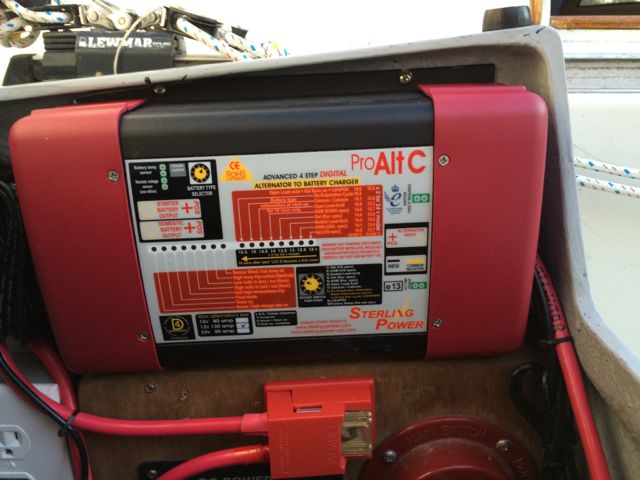
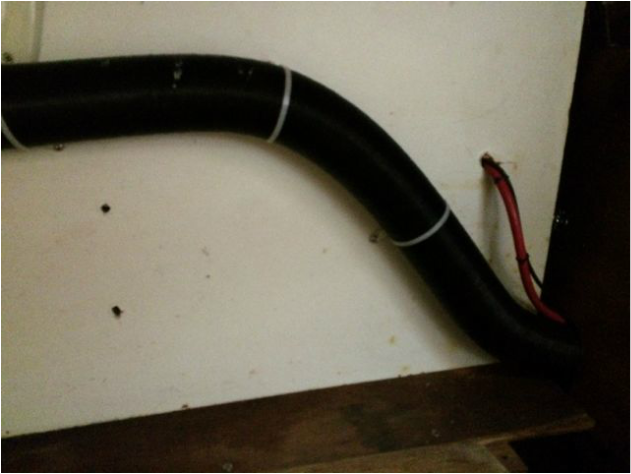
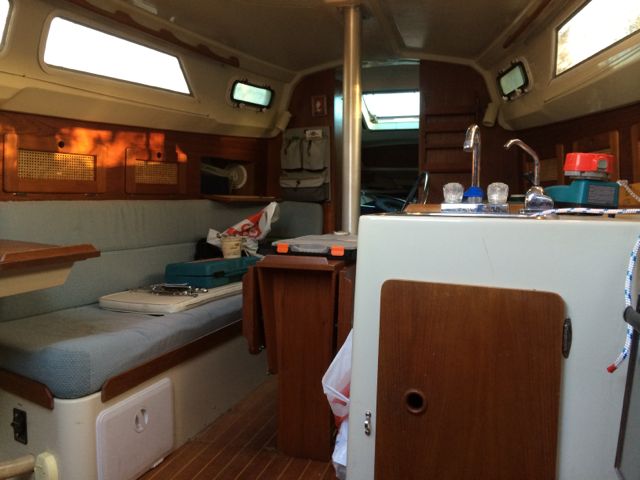
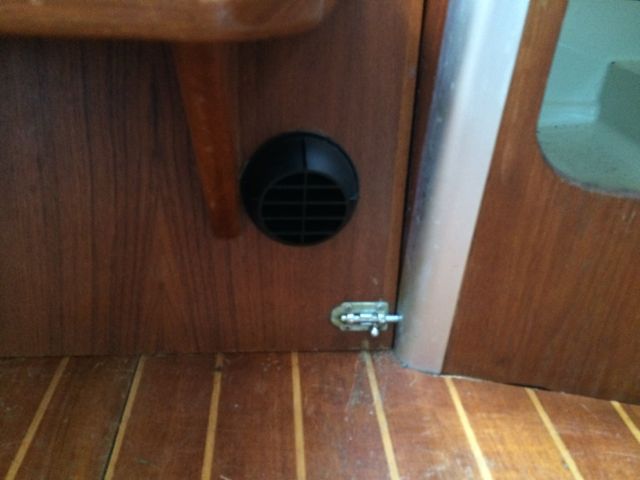
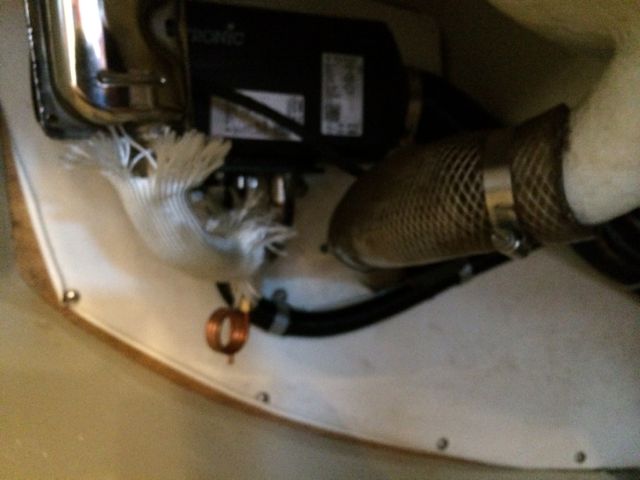
 RSS Feed
RSS Feed
